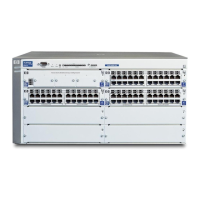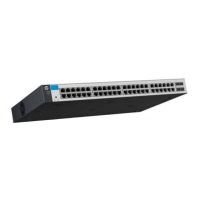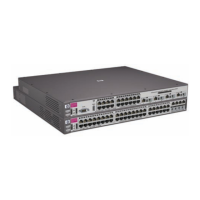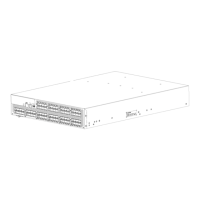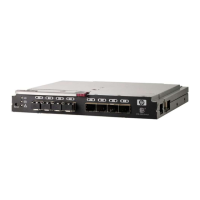14-43
Port-Based Virtual LANs (VLANs) and GVRP
GVRP
Port-Based Virtual LANs
(VLANs) and GVRP
■ Converting a dynamic VLAN to a static VLAN and then executing the write
memory command saves the VLAN in the startup-config file and makes it
a permanent part of the switch’s VLAN configuration.
■ Within the same broadcast domain, a dynamic VLAN can pass through a
device that is not GVRP-aware. This is because a hub or a switch that is
not GVRP-ware will flood the GVRP (multicast) advertisement packets
out all ports.
■ GVRP assigns dynamic VLANs as Tagged VLANs. To configure the VLAN
as Untagged, you must first convert it to a static VLAN.
■ Rebooting a switch on which a dynamic VLAN exists deletes that VLAN.
However, the dynamic VLAN re-appears after the reboot if GVRP is
enabled and the switch again receives advertisements for that VLAN
through a port configured to add dynamic VLANs.
■ By receiving advertisements from other devices running GVRP, the switch
learns of static VLANs on those other devices and dynamically (automat-
ically) creates tagged VLANs on the links to the advertising devices.
Similarly, the switch advertises its static VLANs to other GVRP-aware
devices, as well as the dynamic VLANs the switch has learned.
■ A GVRP-enabled switch does not advertise any GVRP-learned VLANs out
of the port(s) on which it originally learned of those VLANs.

